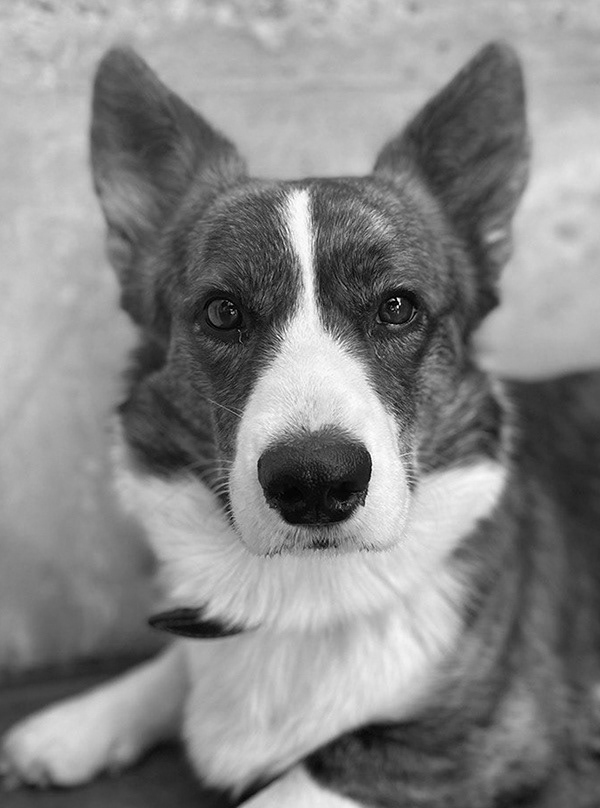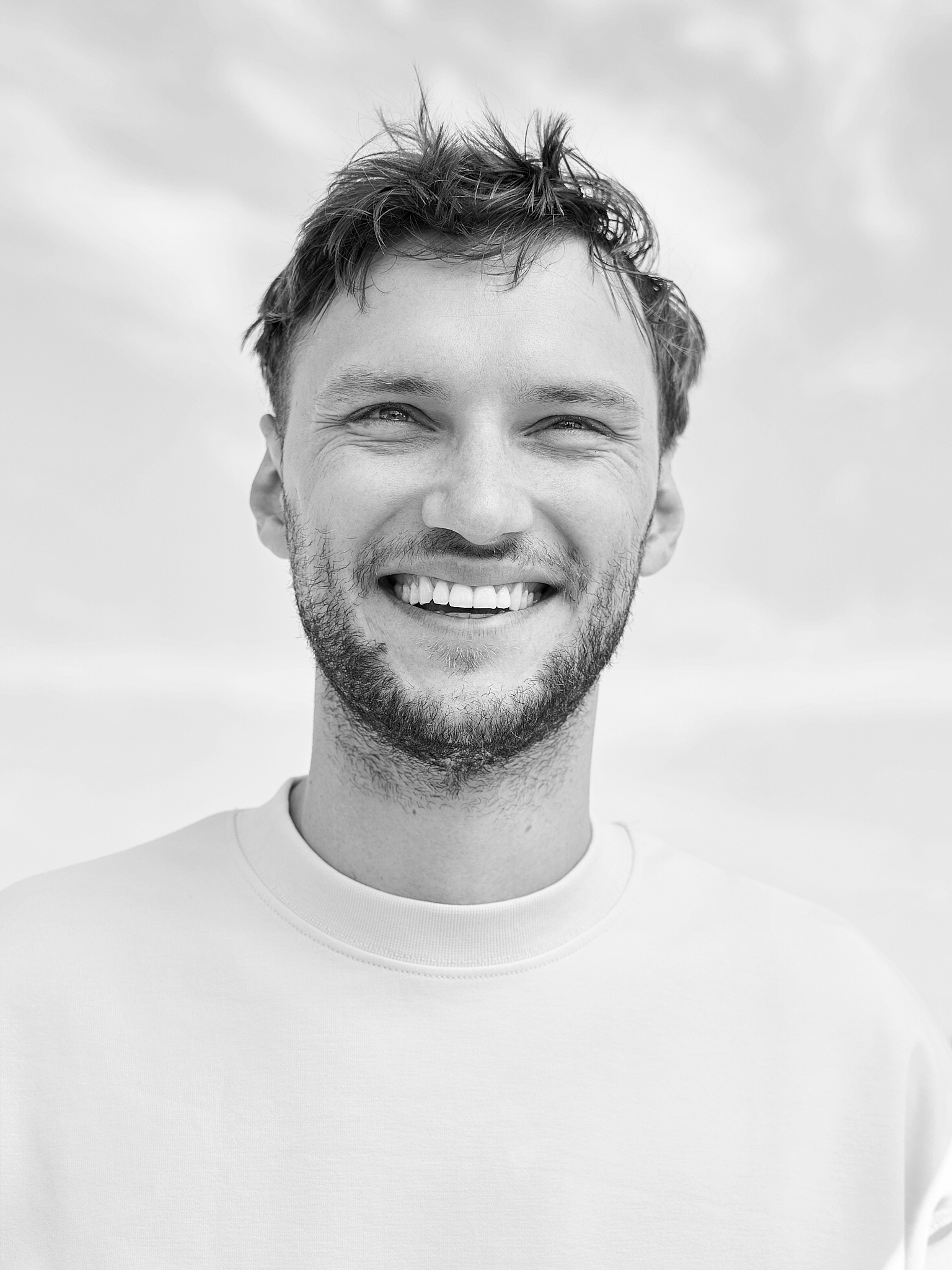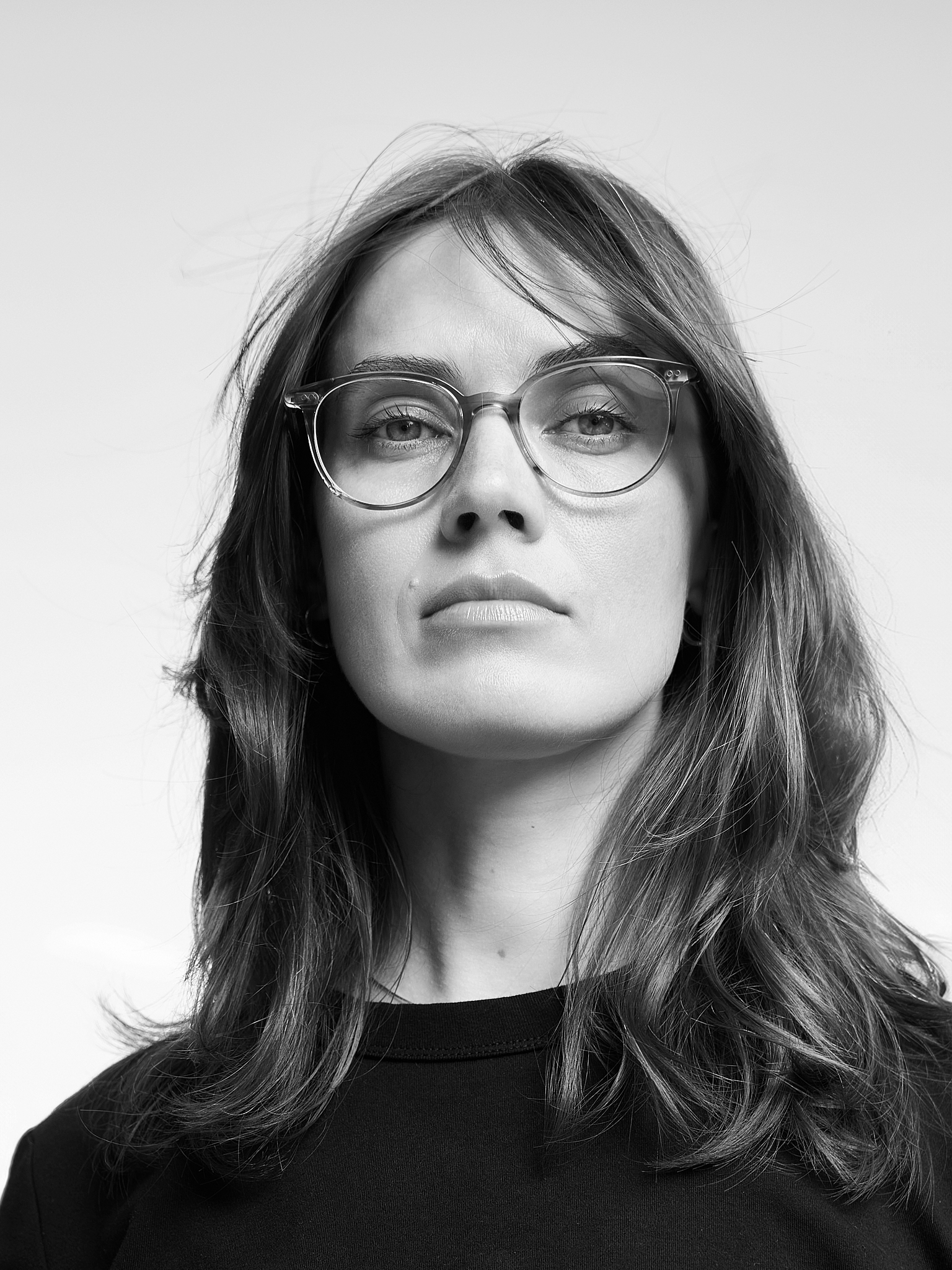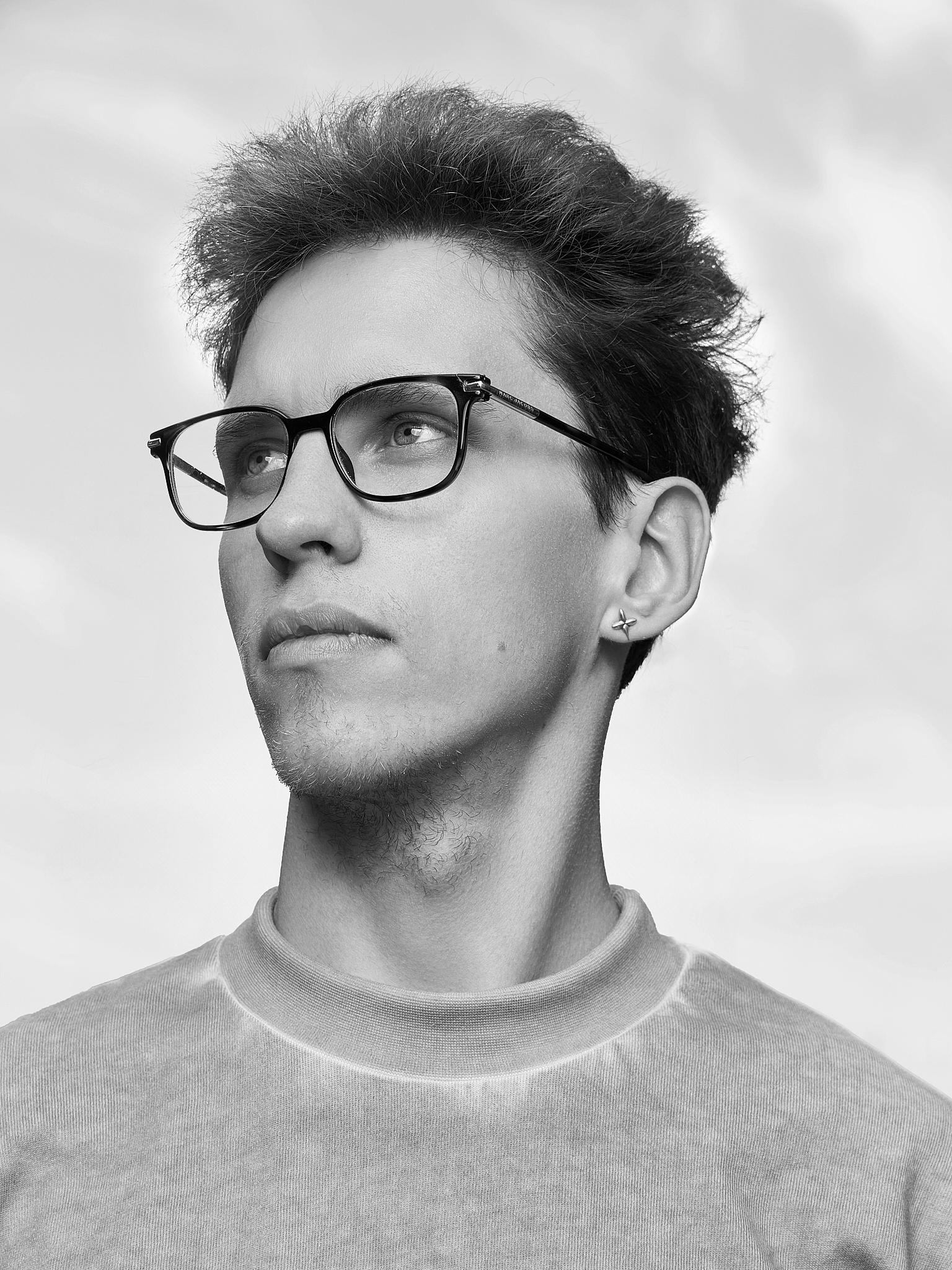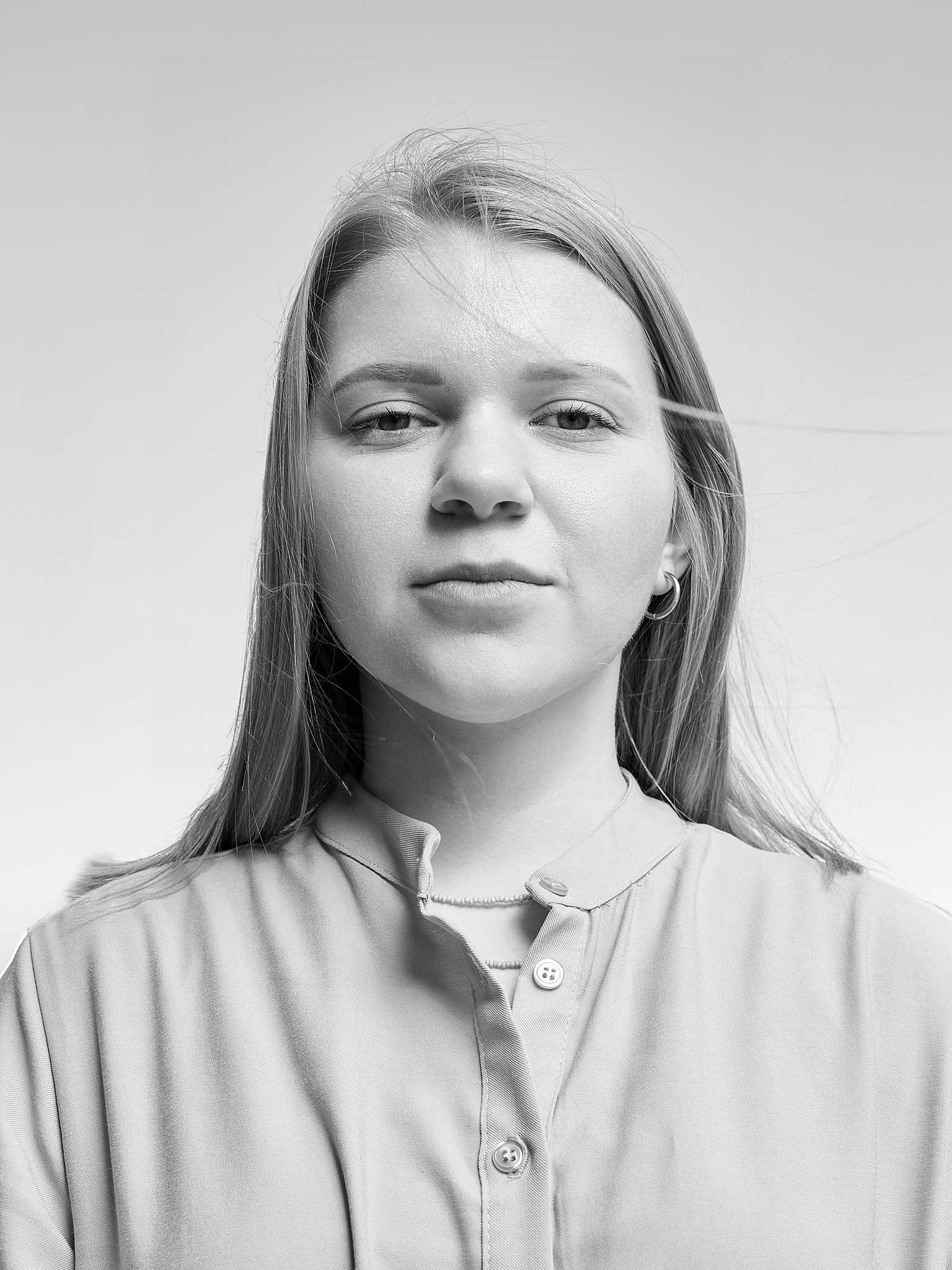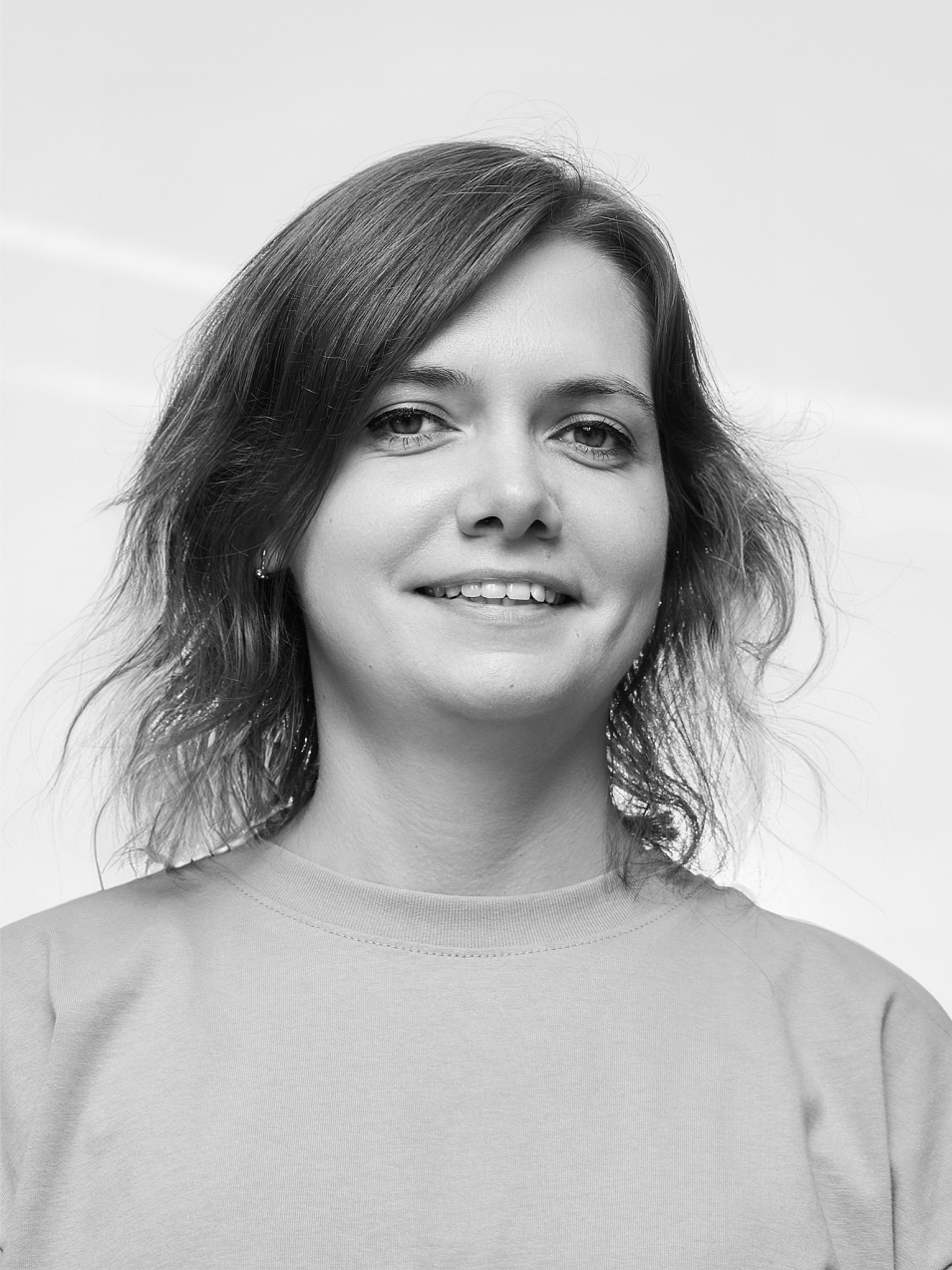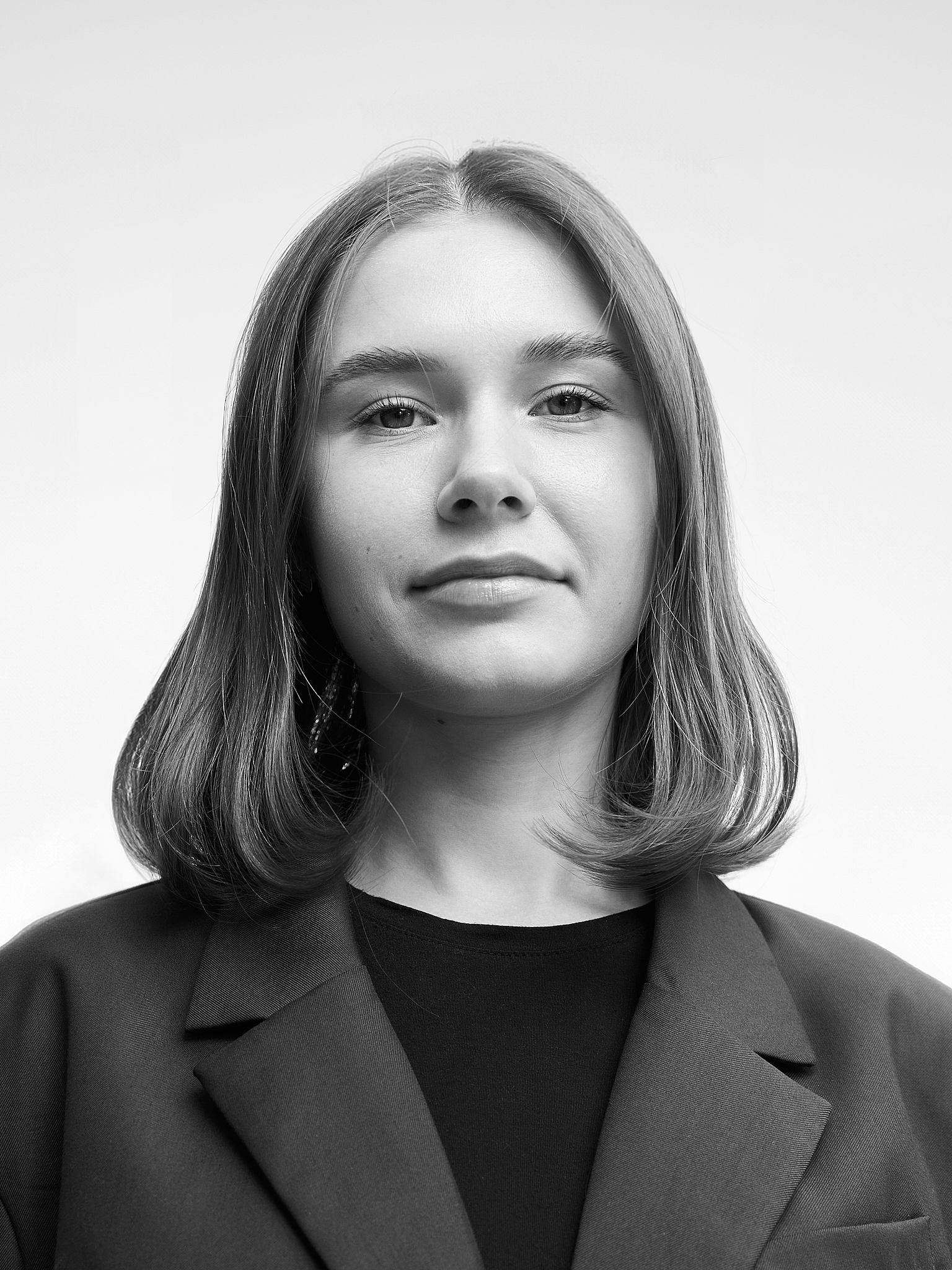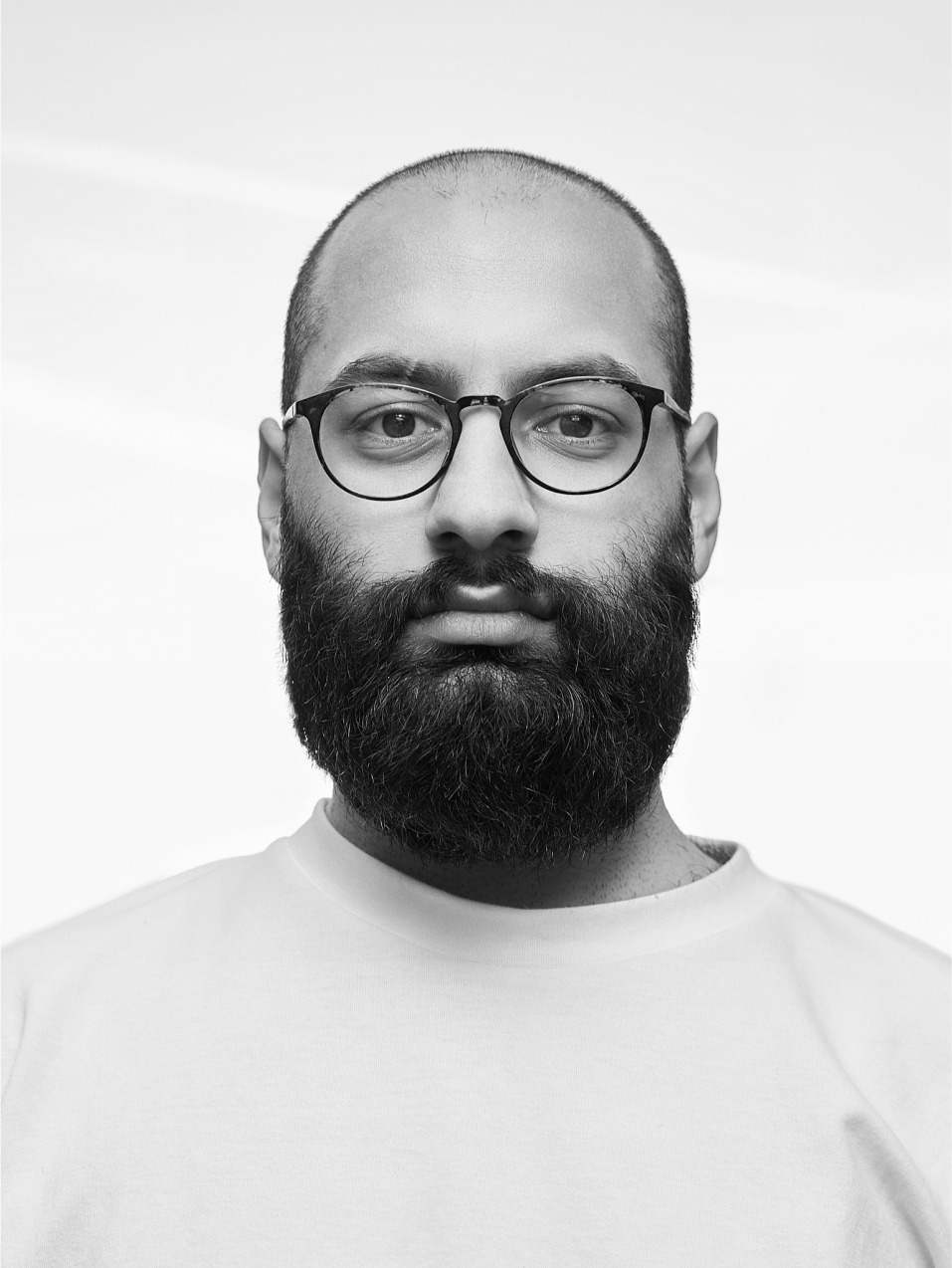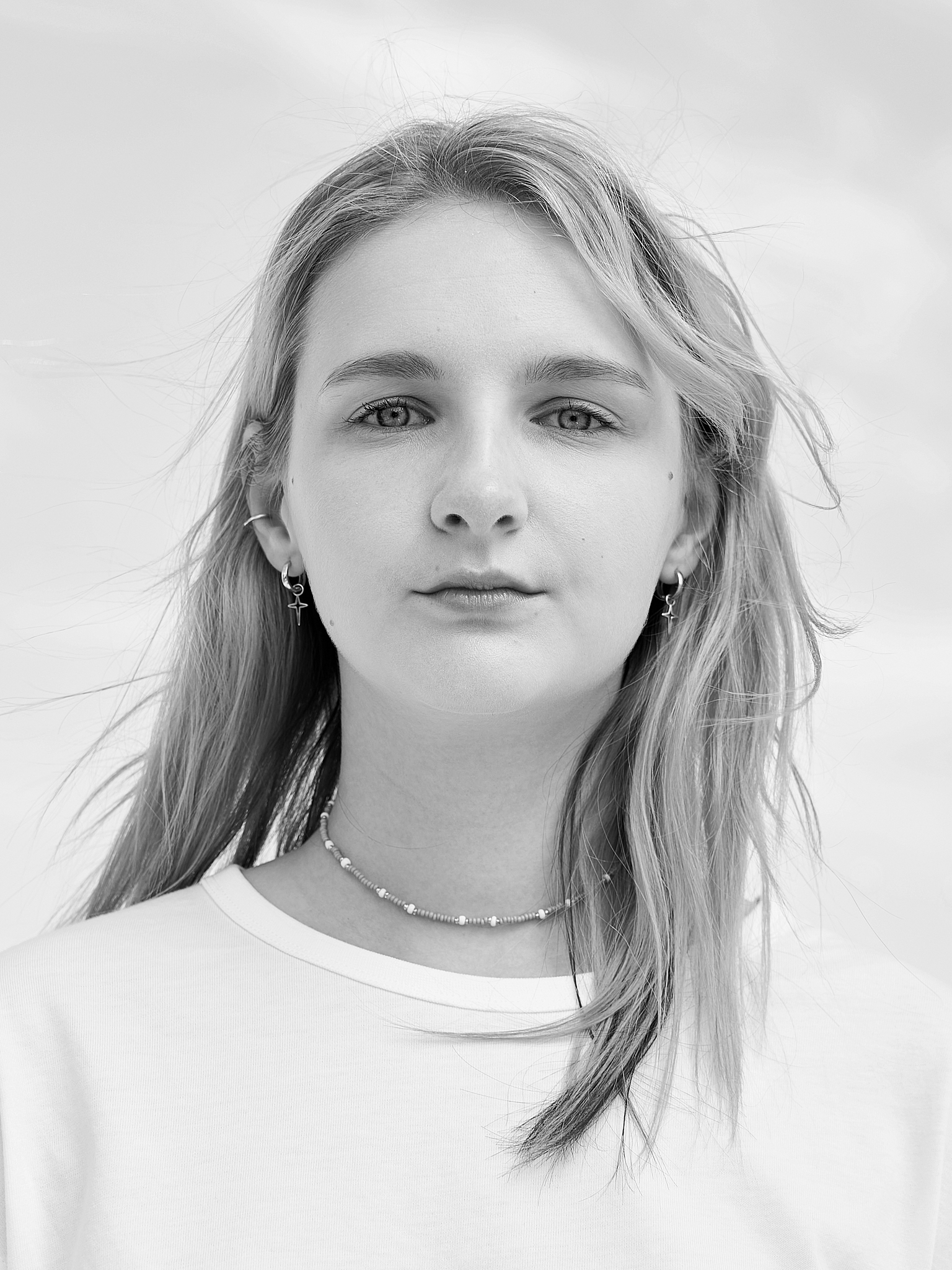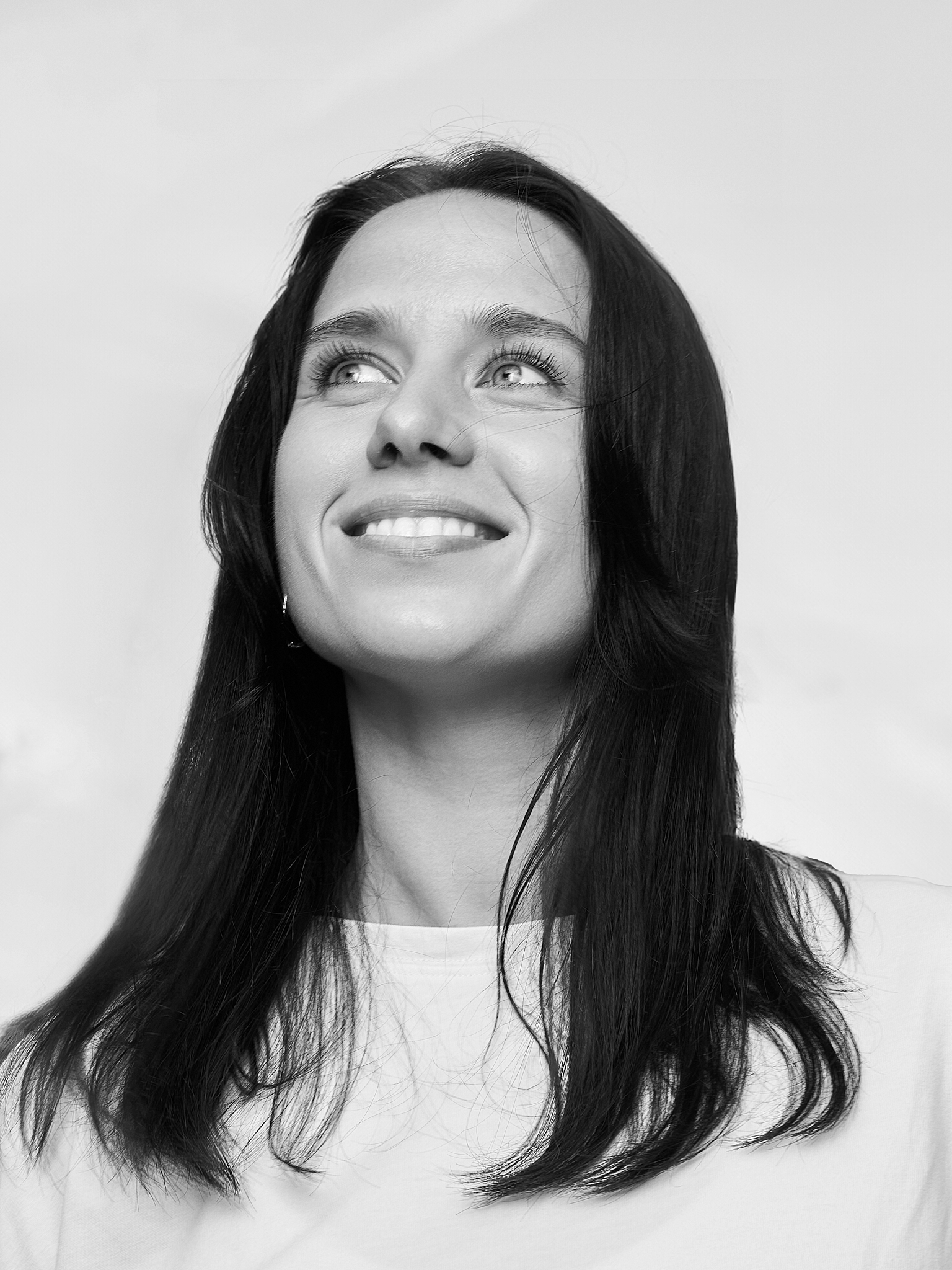Forget who you are | KIDZ pop-up pavilion
2024 | 250 sq.m
Architects: Egor Bogomolov, Sonya Plusnina, Daniil Nosov, Ekaterina Tarasova, Ivan Gorbunov, Daniil Savinskiy, Yulia Tsuglenok, Ekaterina Bologova, Tatiana Kurochkina, Daria Lebedeva, Ruben Movsisian, Maria Soboleva, Alexandra Kabashnaya, Valeria Dzhigil
Visualization: Tatiana Kurochkina
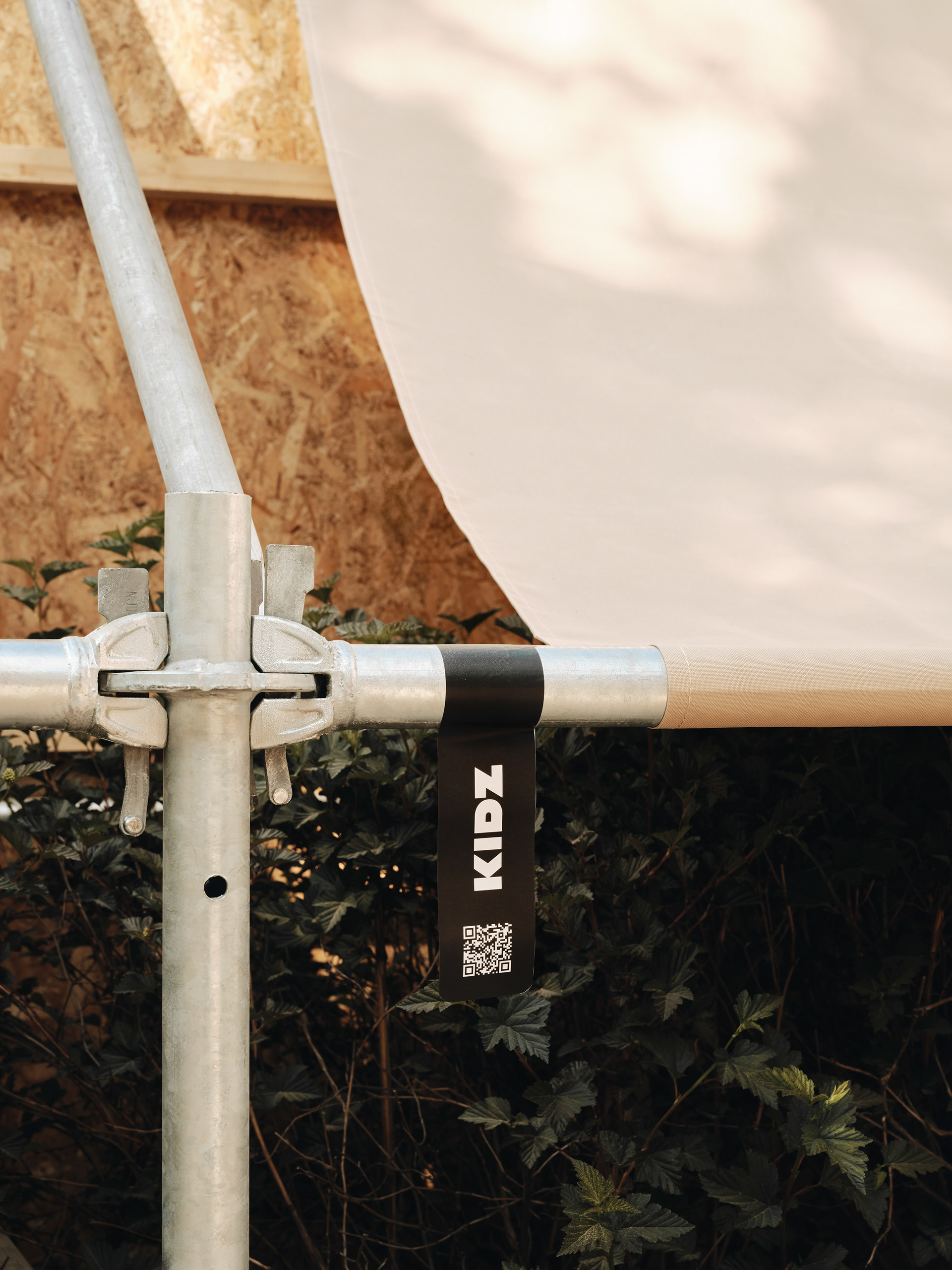

Every year, on June 1st, the design studio KIDZ celebrates its anniversary. This year, to mark our 11th anniversary, we decided to throw a party and created a pop-up pavilion that will operate throughout the summer.
The project is envisioned as a large public sandbox—a space for the co-existence and co-creation of people of different ages, professions, and interests. The idea behind this temporary pavilion is to allow visitors to step away from their usual social roles or habitual behaviors and, for a moment, feel a carefree childlike naivety within themselves. That’s why the project is called Forget Who You Are. Through this object and its unusual format, we aim to spark new, unexpected connections between people through communication, exploration, observation, or play. The space is intentionally designed with a high degree of ambiguity and open functionality, encouraging visitors to decide how to fill it with meaning and activities.
sketch
The pavilion’s structure is formed by an outer fence made of corrugated metal sheets attached to a scaffolding frame. On the inside of the frame, tent fabrics are tied, serving as hammock-style seating. Concrete blocks are laid around the inner perimeter, forming the 10-meter-wide sandbox, into which we placed several tons of fine-grained sand. In the center of the site, there was already a metal horse sculpture, which we chose not to remove. Instead, we carefully covered it with waterproof metallic fabric.
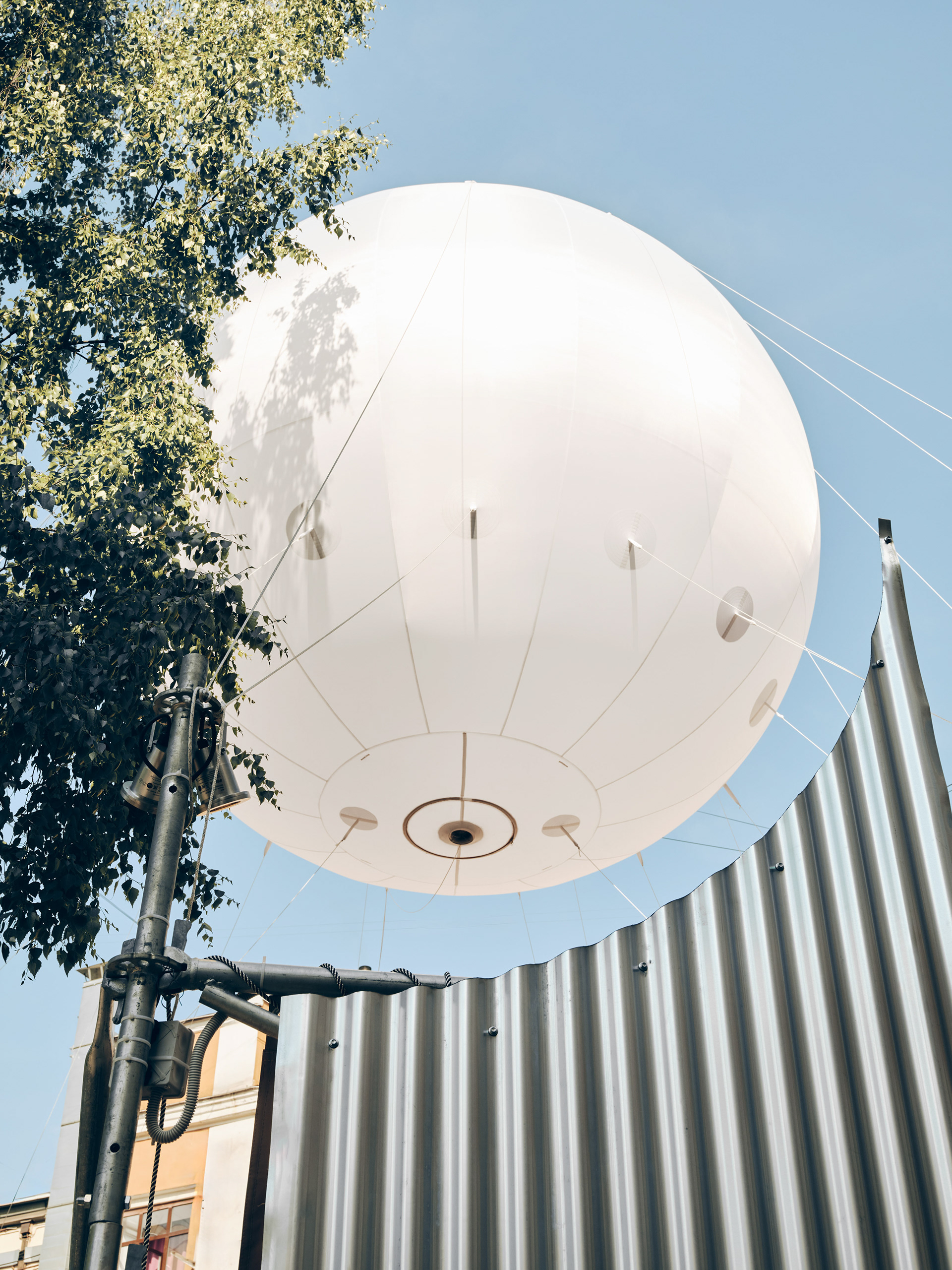
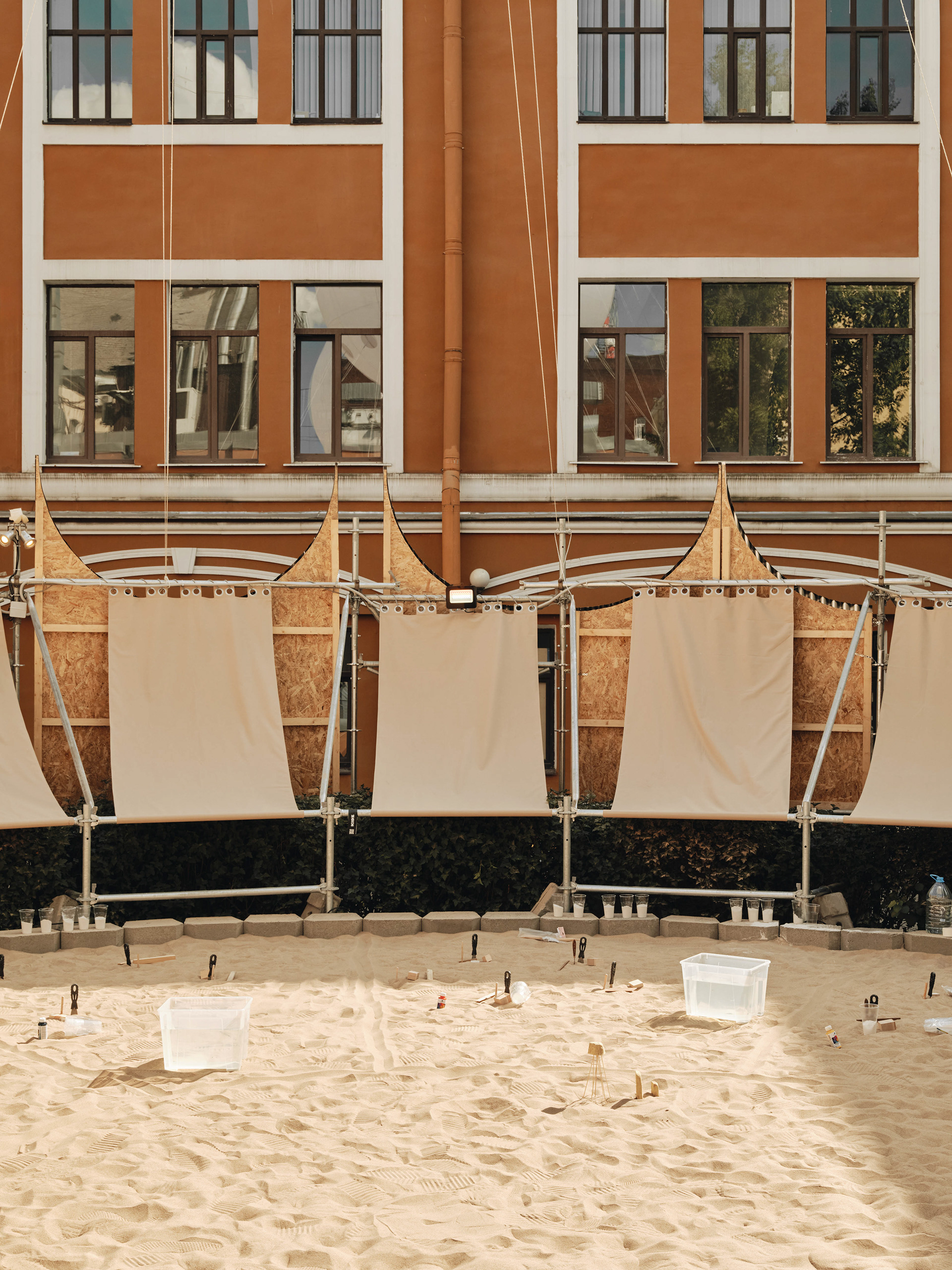
axonometry
The outer fence features round holes and small gaps between the sheets, sparking curiosity and inviting people to peek inside the pavilion. This evokes a sense of childlike wonder, reminiscent of when children peer through small holes, keyholes, or cracks in fences to see what’s on the other side.

This creates a multi-layered recursion: people outside watch others peeking in at those sitting in the hammocks, who, in turn, observe others playing, exploring the pavilion, or building with sand.
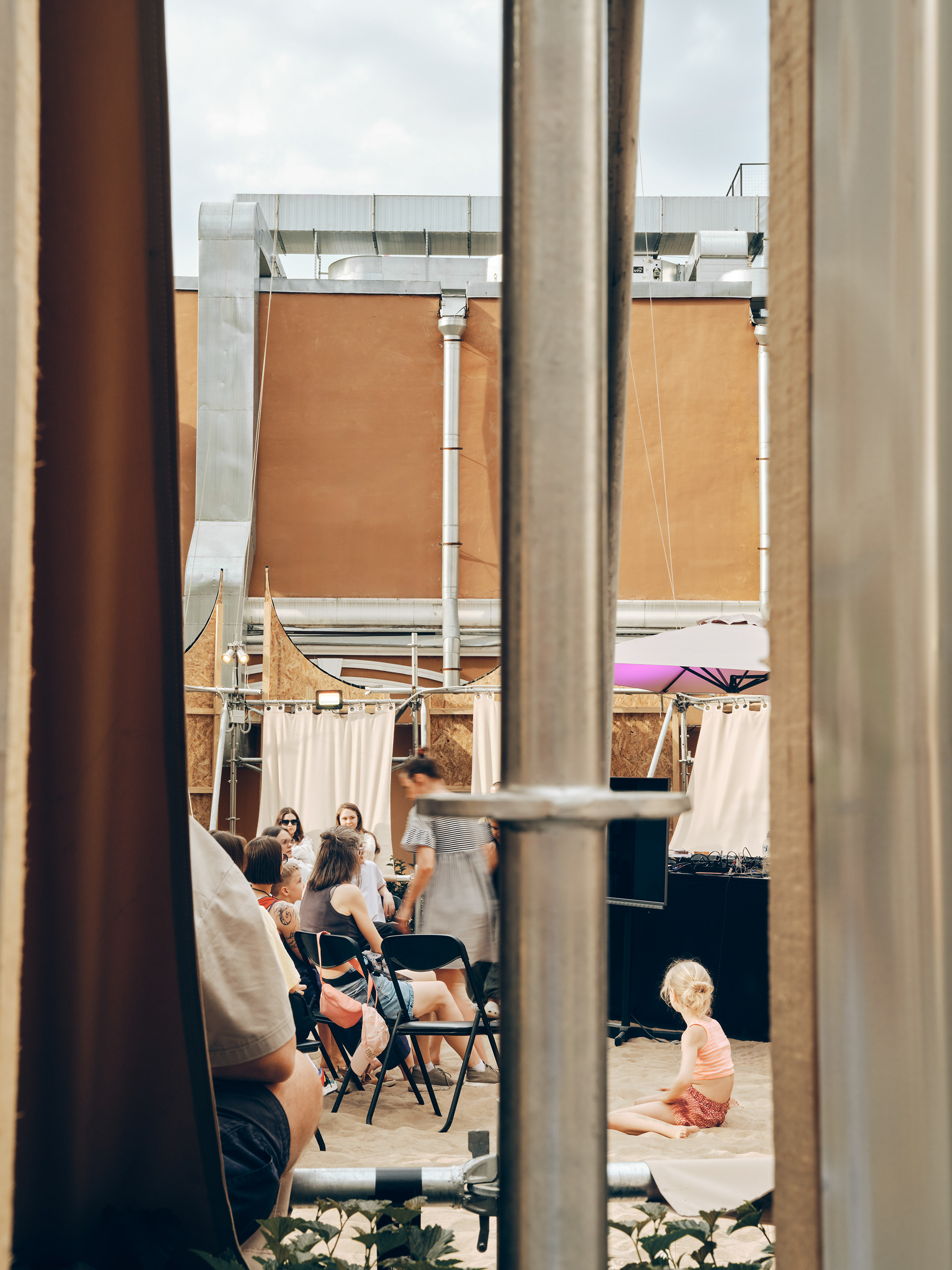

The idea was not to create something specific for entertainment inside but to let people themselves become objects of observation for one another. The result is a sort of amphitheater where both the spectators and the main participants are the visitors who come to relax, socialize, or play in the sand.
As our interactions with each other and the world around us increasingly digitalize—often happening through computers and smartphone screens—many of us start to miss tactile experiences. That’s why we intentionally made sand the primary material for this pavilion. Sand is very tactile and easily adaptable. This large sandy field in the middle becomes a kind of canvas for drawing or a pleasant natural construction material, familiar to us from childhood and without limits for our imagination.
↓ entrance
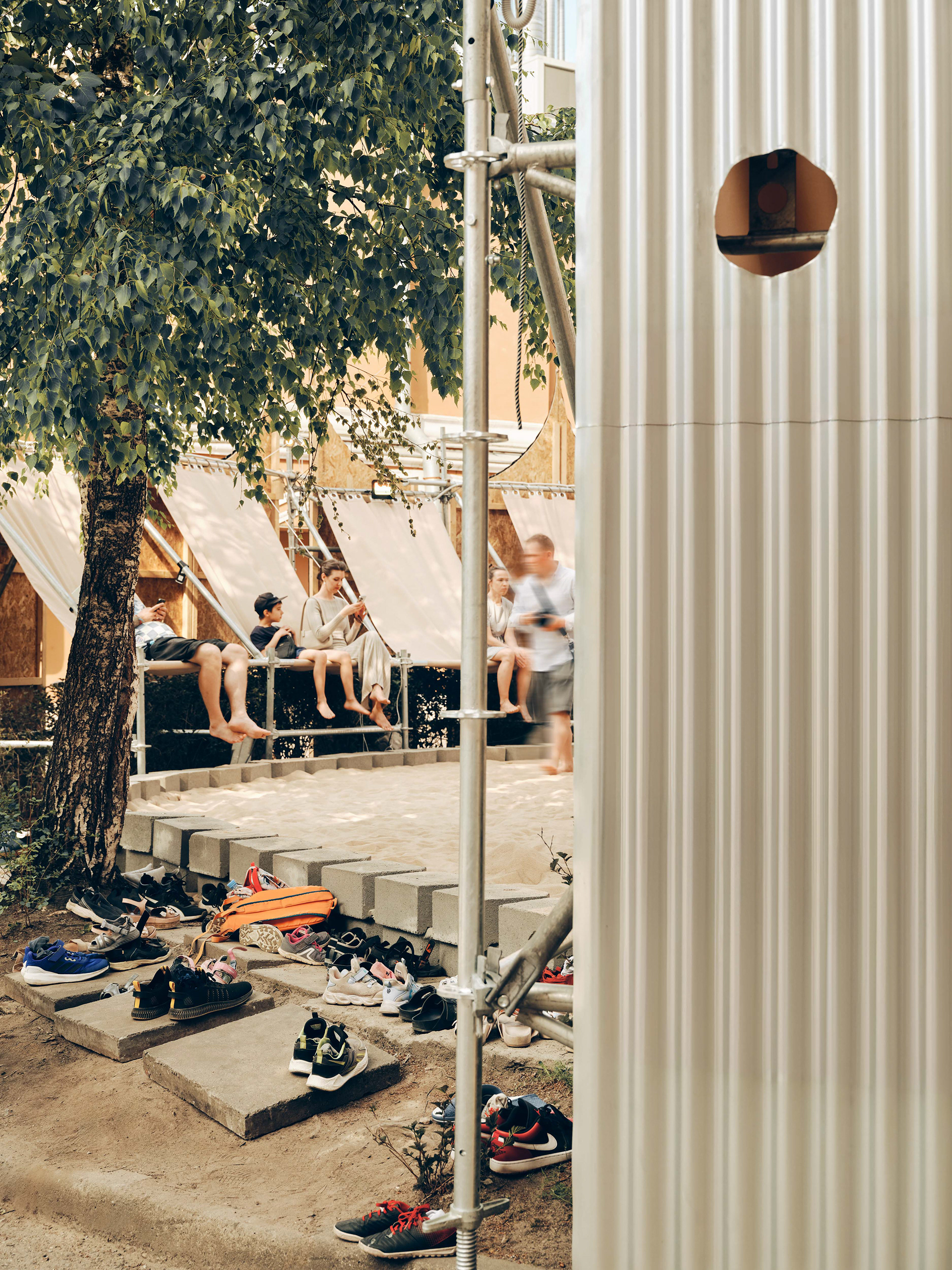
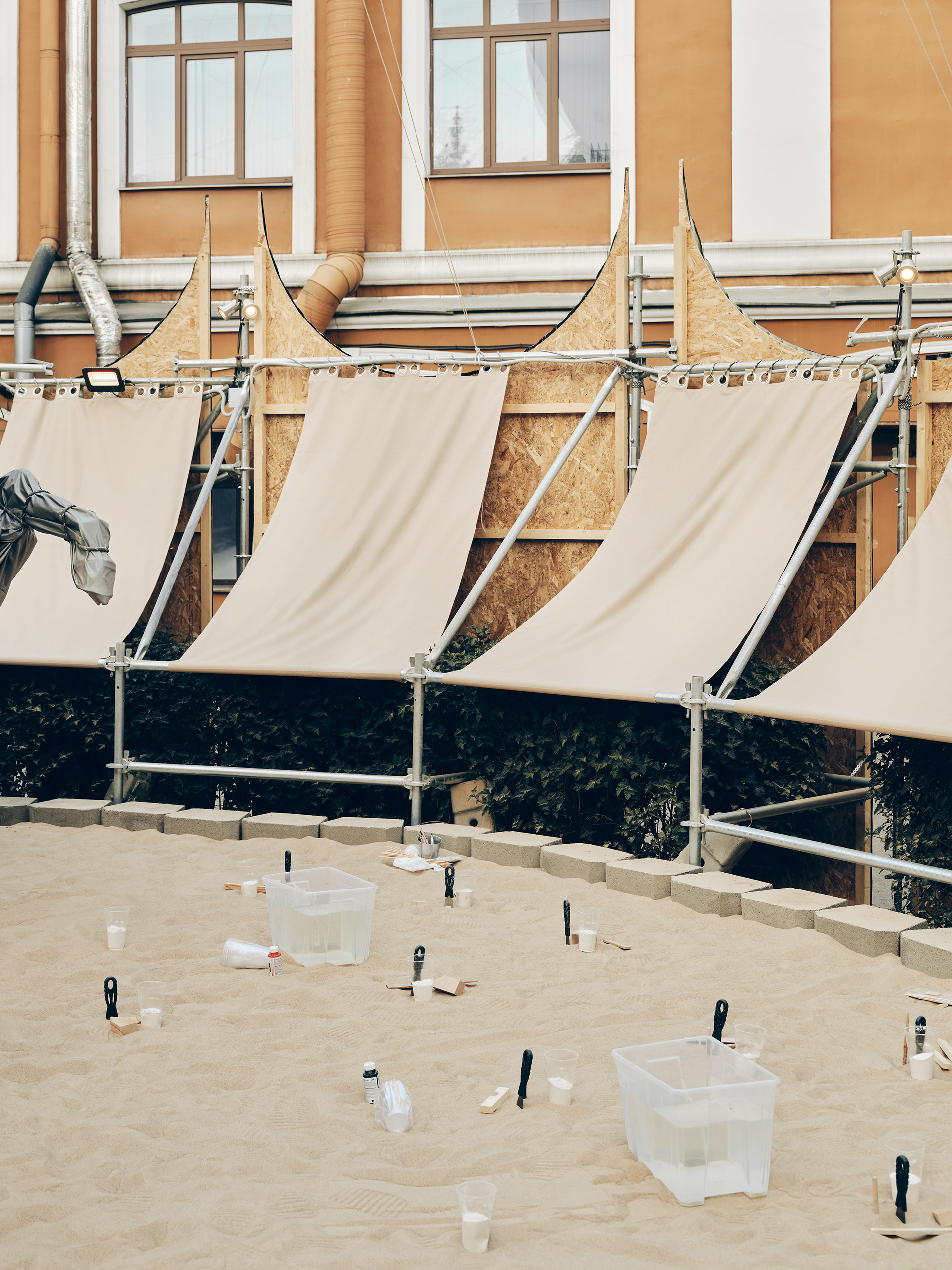
sandbox ↑
The final accent is a large white balloon, 6 meters in diameter, floating above the site. Filled with helium and tethered to the pavilion’s frame, it creates a feeling of lightness. When people sit in the hammocks and look at the balloon swaying gently in the breeze, we hope they can momentarily escape, unwind, and relax.
↓ night version
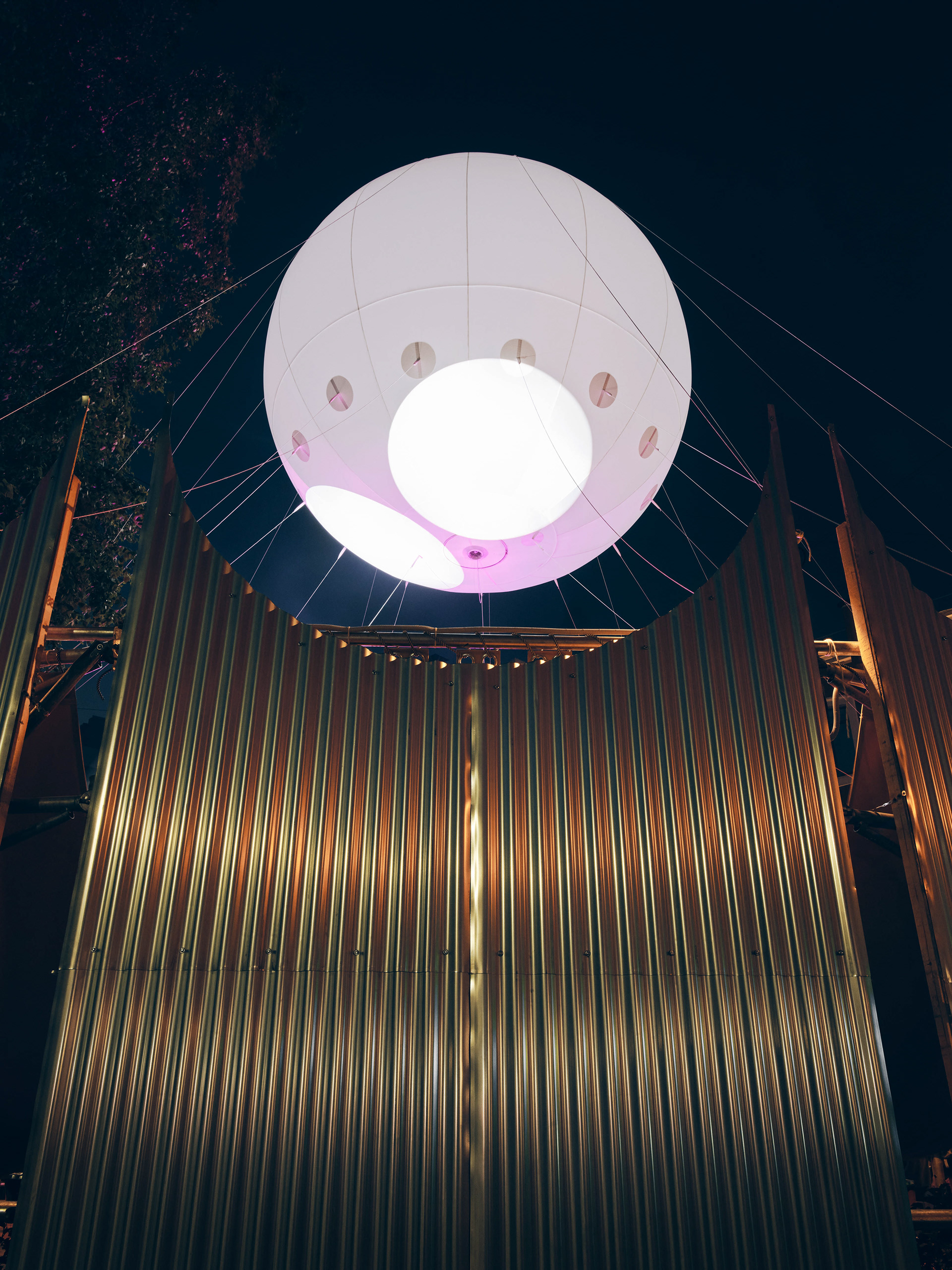

day version ↑
We have created a multifunctional pop-up venue in the city, intended for various events throughout the summer. For example, on the day it opened, the Society of Young Architects held a workshop on creating lighthouses from plaster and sand. We then gave a lecture on our design approach, and in the evening, DJs performed in the same space. People danced barefoot on the sand under the glow of spotlights illuminating the balloon.
↓ process

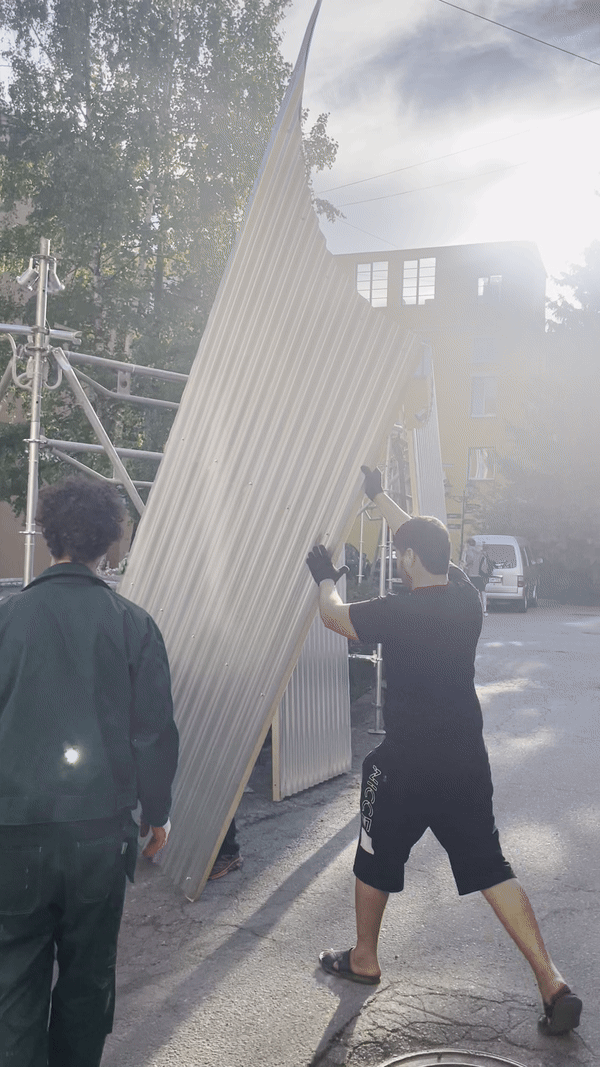
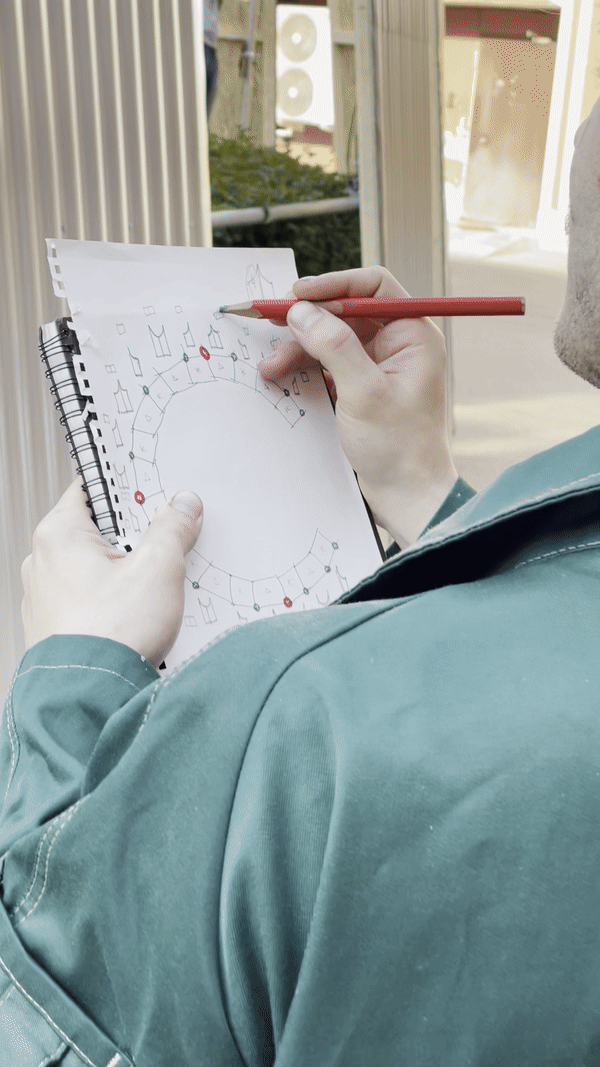
↓ project team
